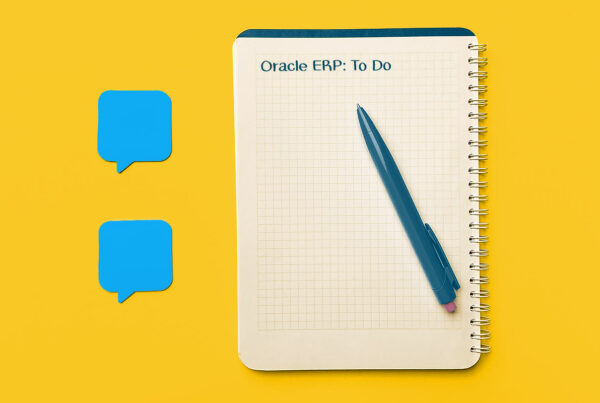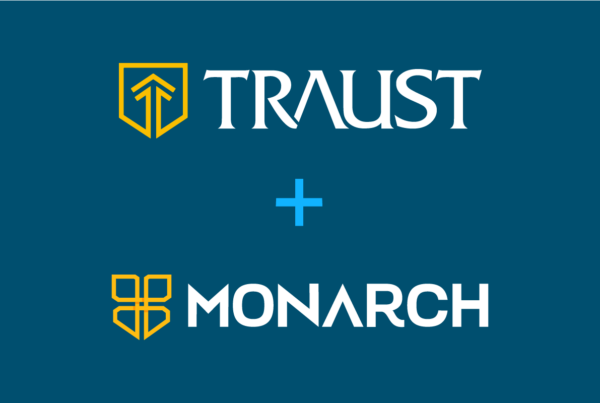Oracle Forms, once the backbone of business applications, has played a pivotal role in shaping the way organizations manage data and processes. However, as digital transformation accelerates, the limitations of legacy systems in meeting the demands of modern web standards, mobile access, and user experience become increasingly apparent.
For IT managers tasked with modernizing your company’s Oracle Forms applications, Oracle APEX offers an appealing solution. The decision to migrate Oracle Forms to APEX can not only enhance application performance — it can help ensure that your organization remains competitive in a digital-first world. The transition to APEX promises a future where applications are not just functional but are intuitive, engaging, and capable of driving business forward in ways previously unimagined.
As we examine the process of migrating from Oracle Forms to APEX in more detail, it’s crucial to understand that this move involves more than just updating technology. It’s a chance to improve how your business uses technology, make operations more efficient, and increase the value your customers receive. We will look at how to manage this transition effectively, identify and avoid potential issues, and fully utilize APEX to update your enterprise applications to modern standards.
Why Modernize Your Oracle Forms Applications
Before we discuss how to migrate from Oracle Forms to APEX, it’s important to understand why companies need to modernize their aging Oracle Forms applications. To remain competitive and meet the evolving demands of the digital marketplace, companies must address the limitations of older technology in meeting current business needs and user expectations. Aging Oracle Forms applications often struggle with issues such as poor user interface, limited accessibility on mobile devices, and difficulties in integrating with new technologies. Modernizing these applications will help you enhance system functionality, improve user experience, and ensure compatibility with contemporary web technologies.
An Aging Technology
Oracle Forms, a tool that has been around since the late 1980s, is a rapidly aging technology. With the tech industry quickly evolving, relying on older systems like Oracle Forms increases technical debt — the implied cost of additional rework caused by choosing an easy, limited solution now instead of a better approach that would take longer. As Oracle Forms continues to age, finding skilled developers who can maintain or update these applications becomes more challenging and expensive. Younger developers may also be hesitant to join a company where they will be forced to work on such outdated tools. Furthermore, Oracle’s support for Forms is diminishing over time, making it a risky platform for future development and maintenance.
Shift from Client-Server Architecture
The move towards cloud architecture is a significant driver for modernizing Oracle Forms applications. Cloud computing offers scalability, flexibility, and cost-efficiency, allowing businesses to adapt quickly to market demands and scale resources as needed. The traditional client-server model used by Oracle Forms is less adaptable to these modern requirements. It can lead to increased operational costs and complexity when trying to scale or update systems. By migrating to more contemporary solutions like Oracle APEX, companies can leverage the benefits of the cloud, including enhanced accessibility, security, and disaster recovery options.
Limited Browser Support
Oracle Forms applications are restricted in terms of compatibility with modern web browsers. They often require specific versions or configurations of browsers that are no longer widely supported or updated. This limitation not only hinders user experience but also exposes organizations to security vulnerabilities, as older browsers may not receive patches for new security threats. As the web ecosystem continues to evolve, maintaining access to applications that require outdated browsers becomes increasingly untenable.
No Support for Mobile Devices
In today’s mobile-first world, the lack of mobile support in Oracle Forms is a significant drawback. With an increasing number of business operations and decisions being made on-the-go, mobile accessibility is critical. Oracle Forms applications do not natively support mobile devices, limiting the ability of users to access and interact with applications from smartphones and tablets. This restriction can hamper productivity, flexibility, and responsiveness, putting businesses at a disadvantage compared to competitors who offer mobile-friendly solutions.
By modernizing Oracle Forms applications to platforms like Oracle APEX, companies can overcome these challenges. Oracle APEX, a low-code, web-based development environment, not only supports cloud architecture but also offers responsive design capabilities for mobile devices, broader browser compatibility, and reduced technical debt, aligning with the future direction of technology and business needs.
Key Challenges in the Process to Migrate Oracle Forms to APEX
That said, migrating from Oracle Forms to Oracle APEX presents several significant challenges for companies, each requiring careful planning and execution:
No “Easy Button” for Migration
The migration process from Oracle Forms to APEX is predominantly manual, lacking a straightforward, automated solution for all but the simplest of Forms. Given that many organizations have developed hundreds, if not thousands, of Forms over decades, the scale of migration efforts can be particularly overwhelming. This complexity is compounded by the intricate business logic and customizations embedded within these Forms, which need careful handling to ensure functionality is preserved or enhanced in the new environment.
Differences Between Oracle Forms and Oracle APEX
The architectural and operational differences between Oracle Forms and APEX mean that it’s not possible to achieve a direct one-to-one translation. Applications rebuilt in APEX will inherently look and function differently, which, while beneficial for leveraging modern web capabilities and improving user experience, introduces the need for user training and change management. This transition phase is crucial for ensuring that end-users can adapt to and fully utilize the new system’s features without significant disruption to their workflows.
Embracing the New, Not Replicating the Old
Companies should not try to replicate Oracle Forms applications exactly within APEX. APEX offers a modern, web-based development environment designed to enhance efficiency, usability, and accessibility. Companies should focus on leveraging these strengths to reimagine their applications, optimizing workflows, and user interfaces for better performance and user satisfaction. The goal should be to create APEX applications that enable users to function more efficiently, taking advantage of new capabilities rather than constraining the new system to fit the old paradigm.
Addressing these challenges requires a strategic approach that includes thorough planning, investment in training, and a focus on leveraging the modern features and capabilities of Oracle APEX to not just replicate, but significantly improve upon the legacy Oracle Forms applications.
Benefits of Adopting Oracle APEX
By now, it should come as no surprise that we at Traust are big advocates for Oracle APEX. For companies looking to modernize their Oracle Forms applications, utilizing Oracle APEX development services brings several significant benefits, many of which stem directly from APEX’s unique position within the Oracle ecosystem.
Fully Supported Framework
Oracle APEX receives robust support from Oracle, indicating a strong commitment to its continuous development and enhancement. This support guarantees that APEX will stay at the forefront of technology trends and security standards, providing a reliable and future-proof platform for application development.
Utilization of the Same Database Tables
APEX applications can use the same database tables as Oracle Forms, facilitating a smoother transition and integration process. This compatibility significantly reduces the need for complex data migration or restructuring, enabling a more straightforward and efficient upgrade path from legacy systems.
Quicker Development Using Similar Skillsets
Development in APEX is faster than in Oracle Forms, largely because it leverages very similar skill sets, such as PL/SQL. This allows developers who are experienced in Oracle Forms to quickly adapt to the APEX environment, minimizing the learning curve and accelerating the development cycle for new applications.
Modern User Experience
APEX offers a modern user experience with a focus on user interface design and interaction patterns that meet current web standards. This modernization enhances user satisfaction and productivity by providing a more intuitive, engaging, and efficient way to interact with applications.
Robust Data Visualization
APEX excels in offering sophisticated data visualization options, including charts and graphs, that are easily integrated into applications. These visualization tools enable more effective data analysis and decision-making by presenting complex data in an accessible and visually appealing format.
Browser-Based and Natively Responsive Applications
Applications developed in APEX are browser-based and natively responsive, meaning they automatically adjust to fit various screen sizes and devices. This responsiveness ensures that applications are accessible and usable on smartphones, tablets, and desktops, enhancing flexibility and user engagement.
Cloud-Based, Always-Available Architecture
Oracle APEX’s cloud-based architecture supports always-available applications, accessible from any device with an internet connection. This anytime, anywhere access model supports remote work scenarios, global teams, and ensures business continuity, making it a versatile solution for modern work environments.
By leveraging Oracle APEX for modernization, companies not only address the limitations of legacy Oracle Forms but also gain access to a suite of modern development tools and capabilities that enhance productivity, user experience, and data analysis, all while staying within the Oracle ecosystem.
Real-World Success
University Foundation Migrates Oracle Forms to APEX
A leading public university foundation faced mounting challenges from an outdated Oracle Forms system, which had become a bottleneck in an organization that needed efficiency and responsiveness. Traust, in partnership with the in-house development team, spearheaded an effort to modernize Oracle Forms using Oracle APEX, creating a robust, future-proof application.
The revitalized system simplified and streamlined the gift and expectancy processing, shifting from tabular navigation to a guided, wizard-based process that drastically reduced data entry errors and improved user experience. Moreover, the transition to APEX allowed for a quantum leap in the agility of the system, granting the in-house developers greater control over the system’s evolution and reducing the time needed for routine and ad-hoc changes.
Starting Your Shift to Oracle APEX
The transition from Oracle Forms to APEX is not merely a technical upgrade; it’s a strategic move towards embracing flexibility, efficiency, and innovation. Companies looking to migrate from Oracle Forms to APEX should follow a strategic approach to ensure a smooth transition. Here’s how to get started:
Stop Building New Functionality in Forms
The first step in the migration process is to halt the development of new functionalities in Oracle Forms. This decision helps prevent further investment in a technology that you plan to move away from, reducing additional effort that would later need to be migrated to APEX.
Extend Your Forms Apps by Connecting Them to New APEX Apps
Begin the transition by extending existing Forms applications through integration with new APEX applications. This approach allows you to start leveraging the benefits of APEX immediately without fully decommissioning your Oracle Forms applications. It serves as an incremental step towards full migration, enabling a smoother transition for your users and IT teams alike. By creating new functionalities in APEX that communicate with existing Forms apps, companies can gradually shift their operational dependency from Oracle Forms to APEX.
Get Agile
Adopting an agile methodology for the migration process allows for more flexibility, quicker realization of benefits, and continuous improvement. By converting one piece of functionality at a time, companies can prioritize critical business functions, test the new APEX applications in real-world scenarios, and refine their approach based on feedback and performance. This piece-by-piece strategy helps manage risk by not overwhelming the system or the users with too many changes at once. It also facilitates training and adaptation among users, as changes are introduced in manageable increments.
Following these steps, companies can more effectively begin to migrate from Oracle Forms to APEX. This phased and strategic approach minimizes disruption, maximizes the adoption of new functionalities, and ensures a more controlled and successful migration process.
Ready to transform your Oracle Forms applications into modern, efficient, and user-friendly solutions with Oracle APEX? Take the first step towards future-proofing your business applications by scheduling a call with a Traust solution architect today. Our experts are here to guide you through the migration process, ensuring a smooth transition tailored to your company’s unique needs.





